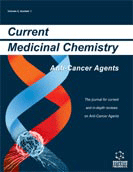Abstract
Etoposide is an important chemotherapeutic agent that is used to treat a wide spectrum of human cancers. It has been in clinical use for more than two decades and remains one of the most highly prescribed anticancer drugs in the world. The primary cytotoxic target for etoposide is topoisomerase II. This ubiquitous enzyme regulates DNA under- and overwinding, and removes knots and tangles from the genome by generating transient double-stranded breaks in the double helix. Etoposide kills cells by stabilizing a covalent enzyme-cleaved DNA complex (known as the cleavage complex) that is a transient intermediate in the catalytic cycle of topoisomerase II. The accumulation of cleavage complexes in treated cells leads to the generation of permanent DNA strand breaks, which trigger recombination/repair pathways, mutagenesis, and chromosomal translocations. If these breaks overwhelm the cell, they can initiate death pathways. Thus, etoposide converts topoisomerase II from an essential enzyme to a potent cellular toxin that fragments the genome. Although the topoisomerase II-DNA cleavage complex is an important target for cancer chemotherapy, there also is evidence that topoisomerase II-mediated DNA strand breaks induced by etoposide and other agents can trigger chromosomal translocations that lead to specific types of leukemia. Given the central role of topoisomerase II in both the cure and initiation of human cancers, it is imperative to further understand the mechanism by which the enzyme cleaves and rejoins the double helix and the process by which etoposide and other anticancer drugs alter topoisomerase II function.
Keywords: etoposide, topoisomerase II, anticancer drugs, dna cleavage, dna ligation, dna cleavage complex, cancer chemotherapy, leukemia
 28
28

















